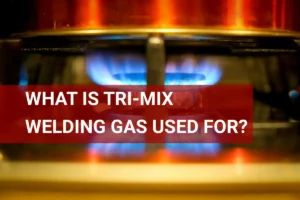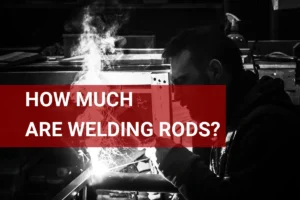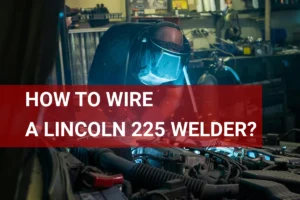How Many Watts Does a Welder Use? Insights on Power Consumption & Types
Published on: June 14, 2025 | Last modified: March 4, 2025
By: Joe Carter
Watts measure electrical power. It shows how much energy a device uses over time.
If you’re curious about how many watts does a welder use, you’re not alone! Knowing the wattage is critical for efficient welding. I’ve seen machines overheat due to excessive load, and trust me, that’s not a good day in the shop!
In this guide, you’ll learn about the definition of watts, types of watts related to welding, prerequisites for using welders, steps to determine watt usage, essential safety tips, different types of welders and their power needs, factors affecting watt consumption, typical issues when choosing the right welder wattage, and the benefits of grasping welder wattage. We’ll also dive into real-world uses for understanding how much power does a welder need and discuss other options you can consider.
Contents
- How Many Watts Does A Welder Use?
- What Are Watts?
- Types Of Watts in Relation to How Many Watts a Welder Uses
- Prerequisites to Keep in Mind
- Essential Precautions
- Steps for Determining How Many Watts a Welder Uses
- Types Of Welders and Their Power Consumption
- Factors Affecting Watts Used by a Welder
- Typical Issues for Selecting the Right Welder Watts
- Common Misconceptions About Welder Wattage
- Benefits Of Understanding Welder Watts
- Real-world Uses for Understanding How Many Watts a Welder Uses
- Other Options You Can Consider
- Frequently Asked Questions (FAQs)
- Conclusion
- Additional Reading
How Many Watts Does A Welder Use?
Watts measure electrical power. So, how many watts does a welder use? A 110-volt welder needs around 1,200 to 2,000 watts (1.2 To 2 Kw), while a MIG welder can use 3,000 watts (3 Kw) or more. Applications vary in difficulty from DIY projects to professional tasks. Understanding the effects of intense light exposure is crucial for safety, which is why learning about weld flash and protection is essential for anyone in the welding field.
What Are Watts?
Watts are the unit of power in the International System of Units (SI). It’s defined as one joule per second, meaning watts measure how fast energy is used or produced. For example, a 1-watt device uses one joule each second it operates.
When welding, wattage gives you a good idea of what you’re working with. It’s crucial to know how many watts a welder uses because this impacts your work’s quality. In my experience, many welders range from 110 to 300 volts, depending on the machine.
I’ve used a machine that consumed a lot of watts. It was a MIG welder, and I often wondered how many watts a MIG welder uses for a regular job. Machines vary, but knowing power consumption helps in choosing the right equipment. For a 110 welder, expect about 1,200 watts for decent performance!
Types Of Watts in Relation to How Many Watts a Welder Uses
What are the types of watts in welding machines?
Alternating Current Watts
Alternating Current (AC) watts are used in many welding processes. Typically, you’ll need around 2,000-4,500 watts for a standard AC welder. Check your welder’s input rating, usually listed in the specifications, for the exact wattage.
Direct Current Watts
Direct Current (DC) watts provide a steady power flow, ideal for stick and TIG welding. These machines usually require about 1,800-3,500 watts. To determine wattage, multiply the amperage by the voltage and adjust for duty cycle.
Input Power Watts
Input power watts represent the energy needed for the welder to operate. Most welders require 1,500-5,000 watts as input. Check the specifications for the welder’s required amperage at your outlet voltage. Ensuring safety in welding includes preventing cancer from welding.
Output Power Watts
Output power watts indicate the energy supplied for welding. A typical welder outputs 200 to 400 amps, translating to 2,500-10,000 watts. Calculate this by multiplying output amperage by output voltage under load. Those interested in welding safety, especially in challenging conditions, may explore how dangerous underwater welding can be.
We covered the different types of watts and their relation to a welder’s usage. Next, we will discuss important prerequisites.
Prerequisites to Keep in Mind
What do you need to know about the wattage a welder uses?
- Watt Meter: You’ll need a watt meter, such as the Kill A Watt P4400, to measure the actual wattage your welder consumes.
- Generator: A generator like the Honda EU2200i (1800 Watts Continuous) is necessary for remote work. It provides sufficient power for your welder.
- Extension Cord: Use a heavy-duty extension cord, such as the Southwire 25890039. It’s essential to prevent voltage drop from affecting performance.
- Power Source: A reliable 240V outlet, such as a 30 amp setup, is required. This ensures you supply the necessary current for your welder’s efficiency, especially when using a MIG or stick welder.
You should now have a good understanding of the necessary prerequisites to consider. In the next part, we’ll discuss essential precautions.
Essential Precautions
Let’s review important precautions for efficient welding.
- Wear Appropriate Gear: Always wear your helmet and gloves. I recommend the Miller Electric Welding Helmet for safety and vision protection.
- Check Power Sources: Ensure your power source can handle your welder’s watt usage. Most MIG welders draw around 300-600 watts. Overloading can cause fires!
- Maintain Proximity: Stay close to your power supply. If using a generator, make sure it provides the same wattage as your welder requires (Often Around 2000 Watts for Heavy-duty). Keeping your machine within specifications helps prevent damage.
- Ventilation: Always weld in well-ventilated areas. Good airflow disperses fumes and prevents carbon monoxide buildup, which is critical for your health.
Following these safety tips won’t just protect you—it’s about staying safe!
That covers important safety measures. Let’s now take a look at calculating the wattage required for a welder.
Steps for Determining How Many Watts a Welder Uses
Here are the steps to find the wattage of your welding machine. This will help you understand how many watts a welder uses during operation.
Identify the Type Of Welder
To determine how many watts a welder needs, first identify the type you’re using: Stick, MIG, or TIG. For example, a standard 110V (120V) MIG welder can use up to 1,400 watts, while a heavy-duty 240V (240V) stick welder might draw 5,000 watts. Knowing your equipment is essential for accurate calculations. If you’re considering whether viewing welding from afar impacts wattage, understanding the relationship between welding distance and power requirements can offer further clarity.
Different welding processes require varying power outputs. For instance, 200-amp welding machines typically need around 5,000 watts, while smaller models use less. Checking your welder’s specifications can help you avoid surprises on your power bill!
Check the Welder’s Rating Plate
Your welder has a rating plate that lists its maximum power draw. Look for volts (V) and amps (A) there. Use the formula: Watts = Volts × Amps. For example, a welder showing 220V and 40A uses 8,800 watts. Always take this reading seriously to avoid overloading your circuits.
Remember, the unit’s power consumption may vary based on load conditions. Machines might not always operate at full load. Once, I forgot to factor in real-world usage, which led to blown fuses. Don’t make that mistake!
Calculate Continuous Operating Watts
Next, assess how long you’ll use the welder. If you run it continuously, multiply the wattage by the usage hours. For example, if your welder is 3,000 watts and you plan to use it for 3 hours, you’ll need 9,000 watt-hours (Or 9 Kwh). This info is crucial for selecting the right generator. It is also important to ensure proper safety by understanding how to ground a welder.
It’s wise to add about 20% for startup bursts. I’ve been down this road before—if you don’t account for extra watts during startup, your generator may fail at a critical moment! Plan accordingly.
Research Specific Models
If you’re uncertain, research your welder’s specific model. Manufacturers often provide power usage on their websites. Many mini welders range from 1,000 to 2,500 watts, while industrial machines require even more. Check the specs for accurate wattage!
Don’t overlook inverter welding machines, which tend to be more efficient. A small model could use significantly less power for the same output. I’ve switched to inverter welders; they’ve lowered my electric bill and simplified long-term calculations! To maintain efficiency and quality, consider learning about ways to reduce welding spatter.
We’ve wrapped up the steps for determining a welder’s wattage. Next up, we’ll look at the different types of welders and their power usage.
Types Of Welders and Their Power Consumption
Let’s explore the types of welders: MIG, TIG, Stick, Multi-Process, and Plasma Cutters.
MIG Welder
MIG welders, or Metal Inert Gas welders, are popular for their ease of use. They typically consume 200 to 300 watts per hour (0.2 To 0.3 Kw). A 110V (About 120W) MIG welder consumes less power during lighter tasks. How many watts does your MIG welder use?
TIG Welder
TIG welders, or Tungsten Inert Gas welders, require a steady hand. Their power usage ranges from 150 to 300 watts (0.15 To 0.3 Kw), depending on the task. They’re great for precision work but can be power-hungry during heavy tasks. How much power does a TIG welder need?
Stick Welder
Stick welders are ideal for tough outdoor jobs. They consume about 90 to 220 watts (0.09 To 0.22 Kw). A larger stick welder may require even more power. Interested in knowing how many watts a stick welder uses?
Multi-process Welder
Multi-process welders handle MIG, TIG, and Stick functions. Power consumption varies widely from 200 to 400 watts (0.2 To 0.4 Kw) based on usage. They’re versatile but can consume power quickly. How many watts does a welding machine like this use?
Plasma Cutter
Plasma cutters are designed for precision cutting. They use about 400 to 700 watts (0.4 To 0.7 Kw) for most operations. Depending on the material and thickness, they can consume power rapidly. Do you know how much power a plasma cutter uses?
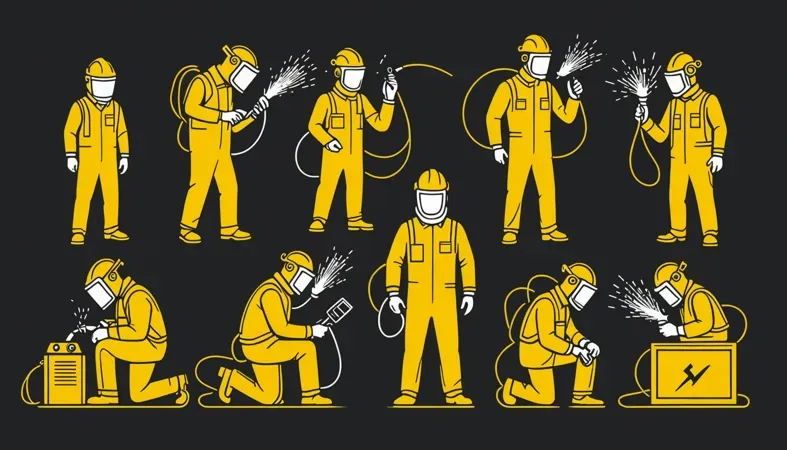
Factors Affecting Watts Used by a Welder
What factors influence a welder’s power needs? Let’s explore.
Type Of Welding Process
The welding process significantly impacts power consumption. For instance, MIG welding generally uses 200-300 amps, around 3000-4500 watts (3-4.5 Kw), while TIG welding can require up to 150 amps, approximately 1800 watts (1.8 Kw). Different processes cater to specific tasks, adjusting energy needs accordingly.
Material Thickness
Thicker materials require more heat and more watts. Welding lightweight materials (Like Aluminum) might use only 100-200 amps (1.2-2.4 Kw), while steel over 1 inch (25 Mm) thick often needs around 250-300 amps (3-3.6 Kw). This thickness directly affects energy consumption. Seam welding is a continuous process used for joining sheets of metal and understanding the specifics can be further explored through this what is seam welding guide.
Welding Technique
Welding technique also affects energy consumption. For example, stringer beads use less power than intricate weaving techniques. Techniques can increase or decrease energy needs, highlighting the importance of a skilled welder in determining the machine’s watt usage.
Welder Efficiency
Efficiency determines how effectively a welder converts electrical energy into heat. A quality inverter welder might have an efficiency rating of 85-90%, effectively using about 1850 watts (1.85 Kw) from a 220V power source. Poorly maintained or older machines can waste up to 15% of energy, impacting overall watt consumption. Safety is also crucial in welding, and it’s important to consider whether welding can cause skin damage similar to sunburn.
Ambient Temperature
Higher temperatures can reduce energy needs since warmer environments help the arc maintain heat. A drop in temperature can increase energy consumption by 10-20%, meaning you might need additional watts during colder months to maintain welding quality.
Typical Issues for Selecting the Right Welder Watts
Let’s look at specific issues related to the watts in welding machines.
Insufficient Power for the Job
Watts determine how much power your welder delivers. If you’re underpowered, you won’t achieve proper penetration. Check the amperage on the machine; for MIG, aim for around 125-150 watts (About 0.17-0.2 Hp). Choose a welder that matches the material thickness.
If a mistake occurs during your weld, knowing effective techniques to remove unwanted welds can save time and ensure a quality finish.
Overheating Of Equipment
Watts can cause overheating if you overload your welder. I’ve experienced this; look for a burning smell or unusual currents. A circuit breaker tripping after 20-30 minutes is a warning. Stay within the 80% duty cycle for long sessions or use a fan for cooling.
Inconsistent Welding Quality
Watts directly affect the stability of your welds. Fluctuations can occur if the machine isn’t adjusted properly. Check the voltage settings. A steady reading is crucial; aim for 20-30 watts per mm of material for quality. Fine-tuning settings can enhance fusion.
Incompatibility With Materials
Watts must match the materials you’re using. Aluminum requires 1.5 to 3 times more watts than steel due to thermal conductivity differences. Always check the watts ratio for your specific metals. Use compatible gases and wire types to avoid issues.
Common Misconceptions About Welder Wattage
Let’s clear up some myths surrounding welder wattage that might confuse you.
Myth 1: All Welders Use the Same Wattage
This one’s a biggie! Many assume all welders draw the same power. In reality, wattage varies widely. For example, a small 110V MIG welder might use around 1,200 watts (1.2 kW), while a heavy-duty model can pull over 5,000 watts (5 kW). Different tasks require different machines!
Myth 2: Higher Watts Always Means Better Performance
More watts can be powerful, but it doesn’t guarantee better work. A quality welder with lower watt usage may provide more stable performance than a higher-watt machine, especially in delicate jobs like TIG welding. It’s all about finding the right balance!
Myth 3: Generators Can’t Match Welder Wattage Needs
False! Many believe their generators can’t keep up with high-watt welders. However, you can find generators rated to handle 5,000-7,000 watts. Just make sure to check your welder’s requirements before making a purchase.
Myth 4: Wattage Is the Only Factor to Consider
Sure, wattage matters, but don’t overlook factors like voltage, duty cycle, and amperage. These elements work together to determine how effectively your welder performs. It’s a complete package!
Benefits Of Understanding Welder Watts
The main benefit of knowing how many watts a welder uses is making informed decisions about energy consumption. I’ve used this knowledge before to calculate operational costs in my projects.
Additionally, understanding watts helps avoid oversizing your generator, ensuring optimal performance. It also aids in choosing the right welder for specific applications, stabilizes your power supply, and enhances equipment longevity.
Real-world Uses for Understanding How Many Watts a Welder Uses
I’ve known people who use welding for anime figurine projects. However, it has many other uses, such as:
- Custom Automotive Repairs: Used to fix frames and exhausts. Body shops prefer welding, as it often requires 140-300 amps for tough jobs. This wattage gets vehicles back on the road without compromising safety.
- Heavy Equipment Fabrication: Commonly employed for refurbishing excavators and tractors. Operations needing 200-400 amps ensure parts are durable and can withstand harsh conditions.
- Artworks and Sculptures: Artists use welding for metal sculptures. A range of 50-200 watts allows for detailed metal crafting, attracting collectors and enthusiasts.
- Building Home Projects: DIY projects often use MIG welders at about 30-200 watts to ensure strong joints in furniture and railings. It’s a practical choice for hobbyists seeking stability and style.
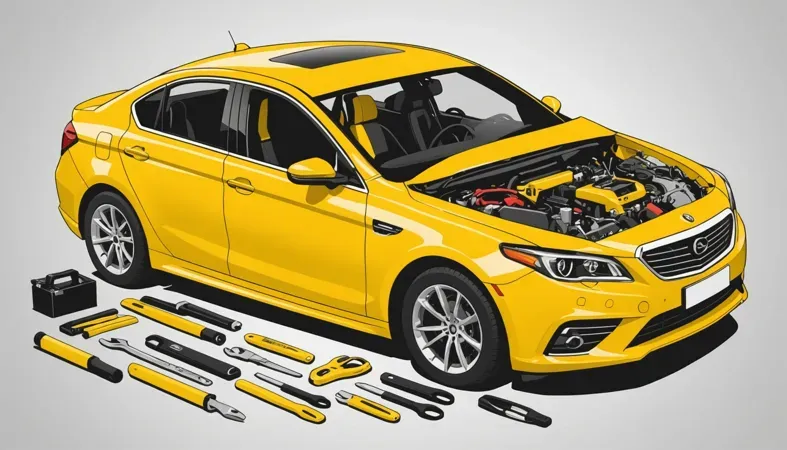
Other Options You Can Consider
If you’re looking for alternatives to traditional welding methods, consider using plasma cutters or TIG welders, such as the Miller Maxstar 151. These tools can provide similar results while often consuming less power. Through trial and error, I’ve discovered that the efficiency of inverter welding machines can also reduce your overall watts used.
You might want to explore solar-powered welders, which use renewable energy and can be great for remote locations. Additionally, gas welding kits, like the Harris Silversmith K, can come in handy when looking for options with portable energy needs. They may not require the same wattage, and you can achieve quality welds without plugging into an outlet.
Frequently Asked Questions (FAQs)
Now let us look at the questions I typically get asked.
How Many Watts Does a 110 Welder Use?
How many watts does a 110 welder use? A 110 welder typically uses around 1,000 watts (1 Kw) during its operation. This means you can run it on standard household circuits, making it perfect for light-duty tasks!
How Much Power Does a Mig Welder Use?
How much power does a mig welder use? A standard MIG welder usually consumes between 200 and 400 amps. With a typical voltage of 230 volts (V), this amounts to about 46,000 to 92,000 watts, depending on your settings.
Will a 3500 Watt Generator Run a Welder?
Will a 3500 watt generator run a welder? Yes, a 3500 watt generator can run a smaller welder, specifically those that consume around 2,500 watts. However, you’ll want to check the starting watts, as they can be higher due to initial surges during operation.
How Many Watts Does a Stick Welder Use?
How many watts does a stick welder use? A stick welder generally utilizes between 140 and 240 amps. When connected to a standard operating voltage of 230V, it can use around 32,000 to 55,200 watts.
How Big Of a Generator Do I Need to Run a Welder?
How big of a generator do I need to run a welder? You’ll need at least a 5,000-watt generator for typical welders. This offers enough power to handle both operating and starting amperage, ensuring smooth performance without interruptions.
Conclusion
We’ve gone through a lot, thank you for sticking it out. We covered what watts are, how they relate to different types of welders, and the importance of considering prerequisites and essential precautions. We also discussed factors affecting power consumption, types of welders, real-world uses, and some advanced tips for understanding welder wattage.
So, how many watts does a welder use? It usually ranges from 1,500 to 5,000 watts (1,500 to 5,000 W, or About 1.5 To 5 Kw). Stick welders use about 1,500 watts (1.5 Kw), while MIG welders can use around 3,500 watts (3.5 Kw). Knowing these details helps you choose the right machine, ensuring your projects go smoothly.
If you’re interested in diving deeper into related topics, we invite you to visit our homepage at What is Welding for more expert insights and advice on welding.
Additional Reading
- ISO. (2017). ISO 3834: Quality Requirements for Fusion Welding of Metallic Materials. Geneva, Switzerland: ISO.
- Smith, D. L. (2010). Welding: A Journey to Explore Its History. Dubuque, IA: Kendall Hunt Publishing Company.
- Little, R. L. (1999). Welding and Welding Technology. New York, NY: McGraw-Hill Education.
Joe Carter is a retired welding professional with over 40 years of hands-on experience in the industry, spanning ship repair, structural welding, and even underwater projects. Joe is a master of MIG, TIG, and Stick welding. Passionate about mentoring the next generation of welders, Joe now shares his decades of expertise and practical insights to help others build rewarding careers in welding.
MIG Welder, MIG Welding, Power Consumption, Safety Tips, Safety Tips For Welding, TIG Welder, Voltage Drop, Welder Wattage, Welding, Welding Safety


